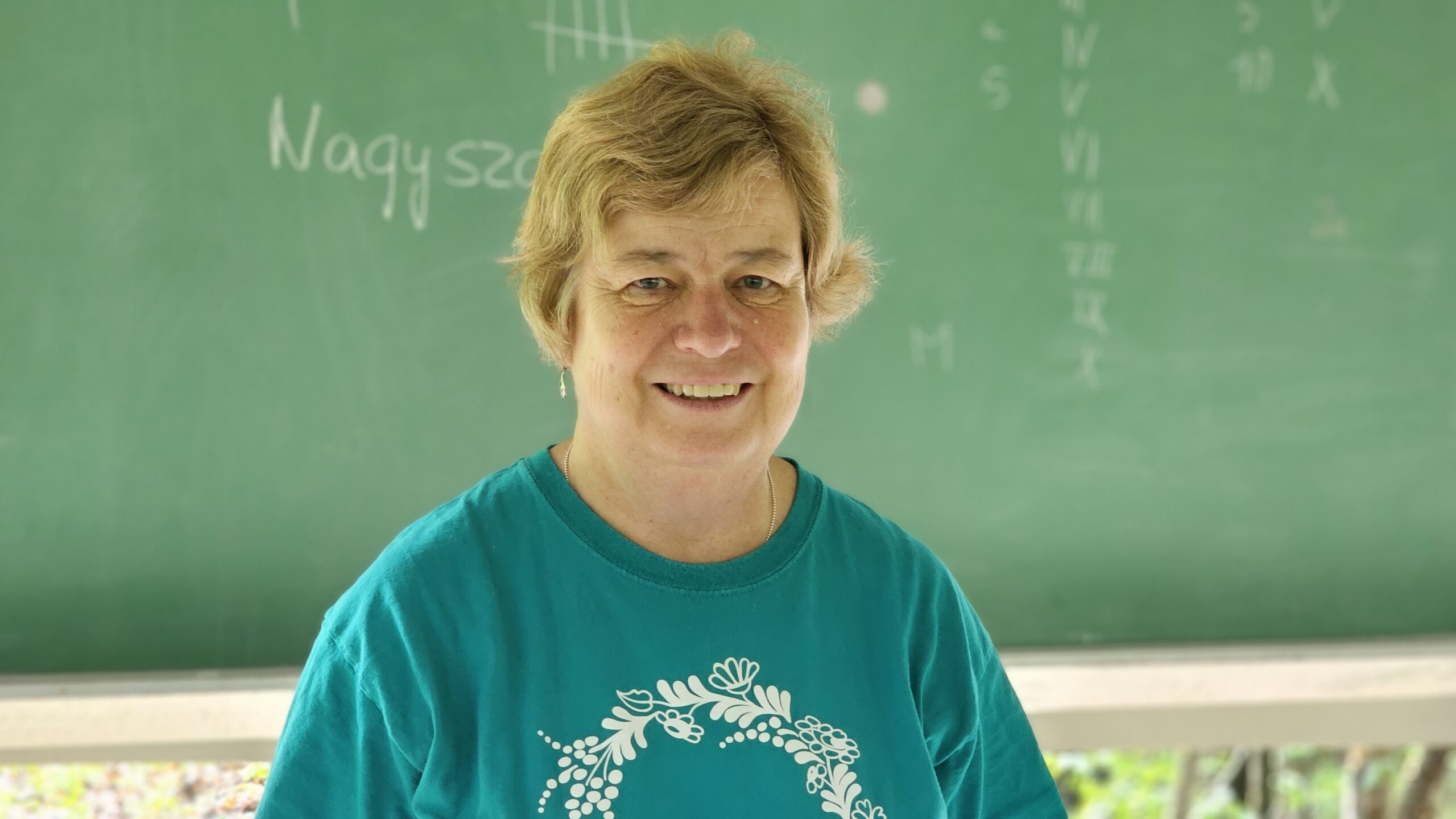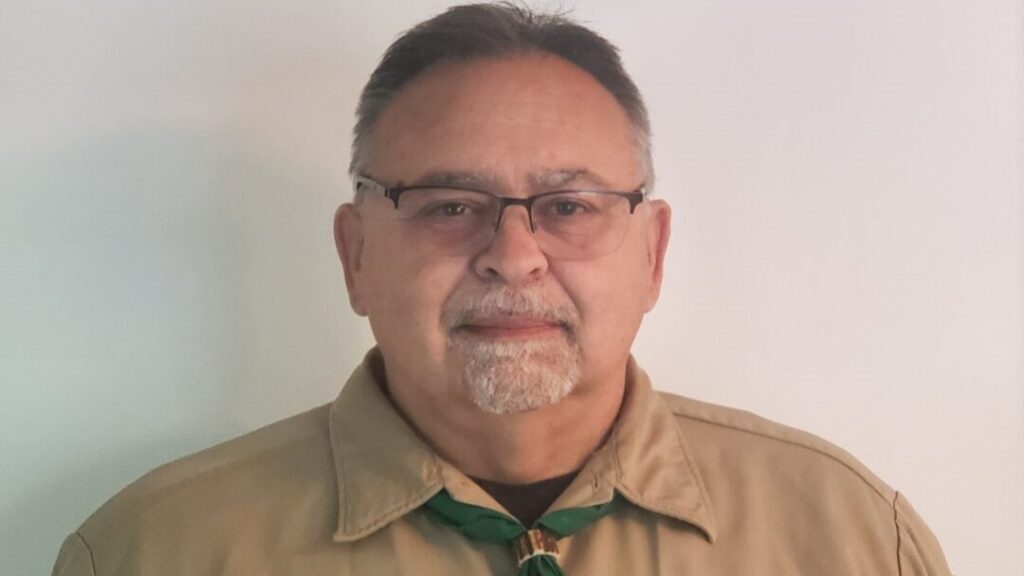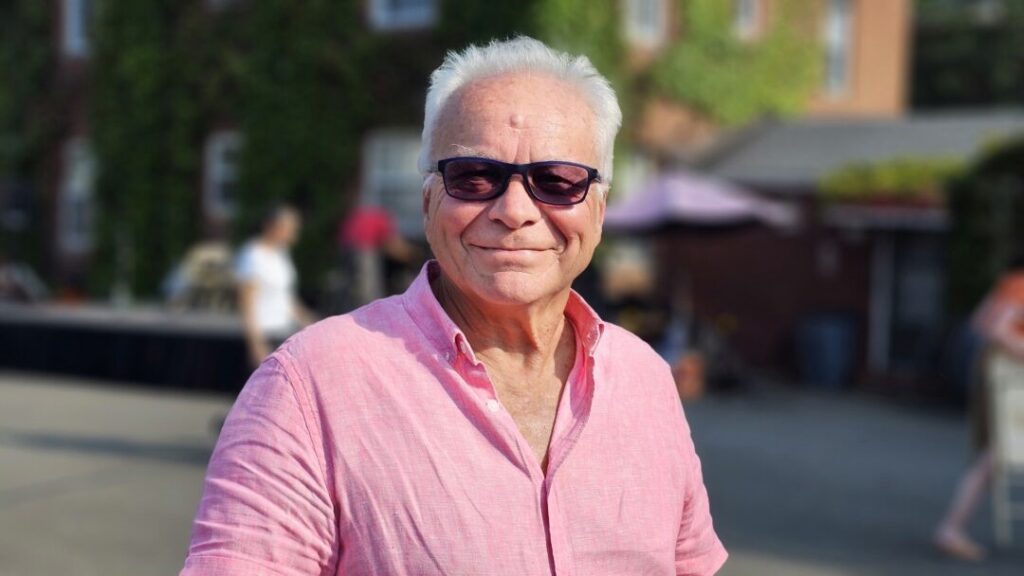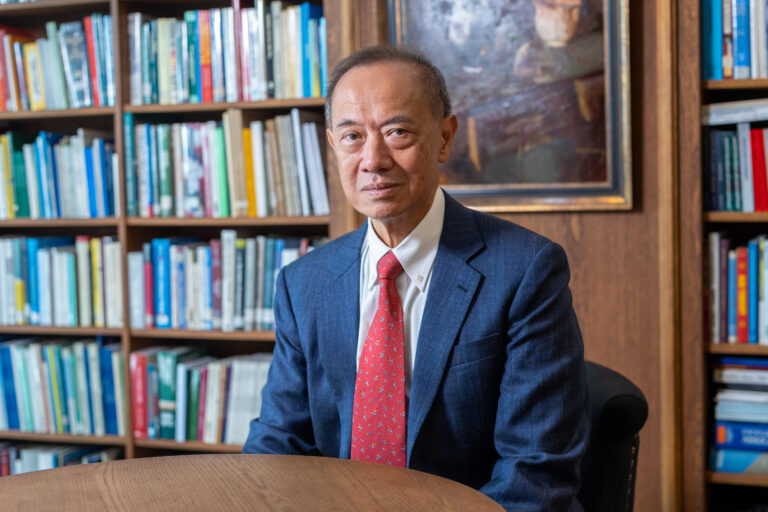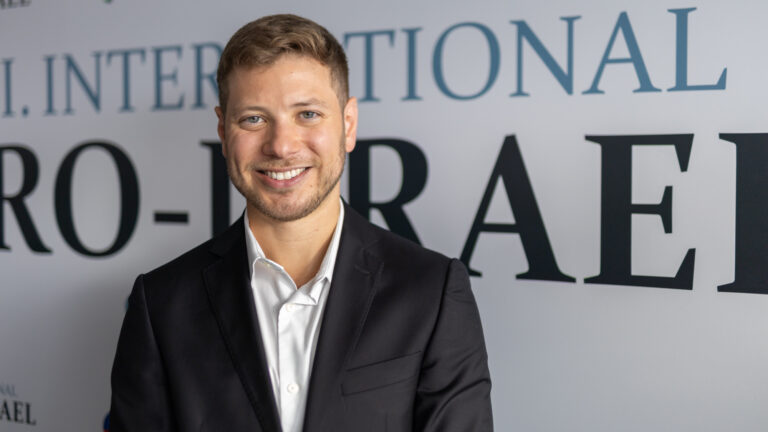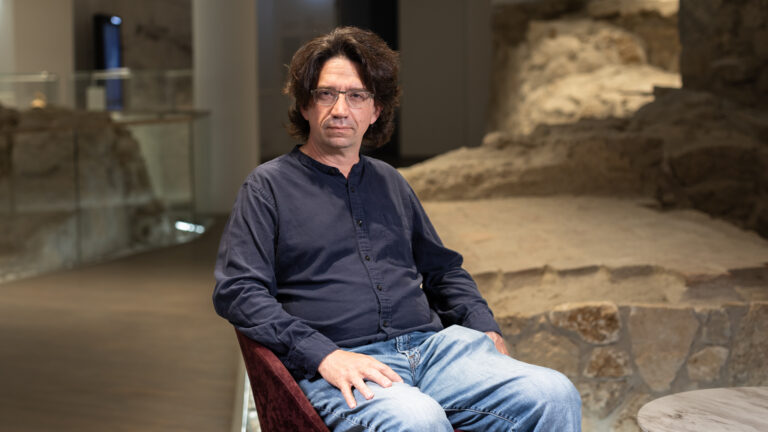This is an abridged version of the original interview first published in Hungarian on 777.hu.
I met Kata at the annual leadership training camp of the Association of the Hungarian Scouts in Exteris (KMCSSZ) in Fillmore, upstate New York, who convinced me to send my 10-year-old daughter to the next year’s Hungarian School Camp. Although the camp is primarily intended for Hungarian children born in the U.S. who don’t have a weekend Hungarian school nearby, my daughter took the invitation so seriously that it was impossible to talk her out of it. I visited the camp for a day as a journalist to interview the camp’s principal, who is also leading the Sándor Kányádi Hungarian School in the San Francisco Bay Area.
***
When and how did you come to America?
I was born in Budapest and lived there until the age of 35. I graduated from the Eötvös Loránd University (ELTE) majoring in Hungarian, and taught Hungarian language and literature at the Kölcsey Ferenc High School in Budapest for 11 years. My husband, Csaba is a physicist; he worked at the Central Research Institute for Physics (KFKI) in the early 1990s, but he didn’t have enough opportunities to research what he was really good at, so when he got a scholarship in 1993, together with our two daughters—the little one was two, the older one was close to five years old—we came to Houston, Texas, to Rice University for a year, where Csaba had a post-graduate position. When the scholarship ended, we went back to Budapest, my older daughter started school, but my husband was called back to the U.S. He came in February of that year, and we followed him at the beginning of July. That was in 1995, so almost thirty years ago, unbelievable…
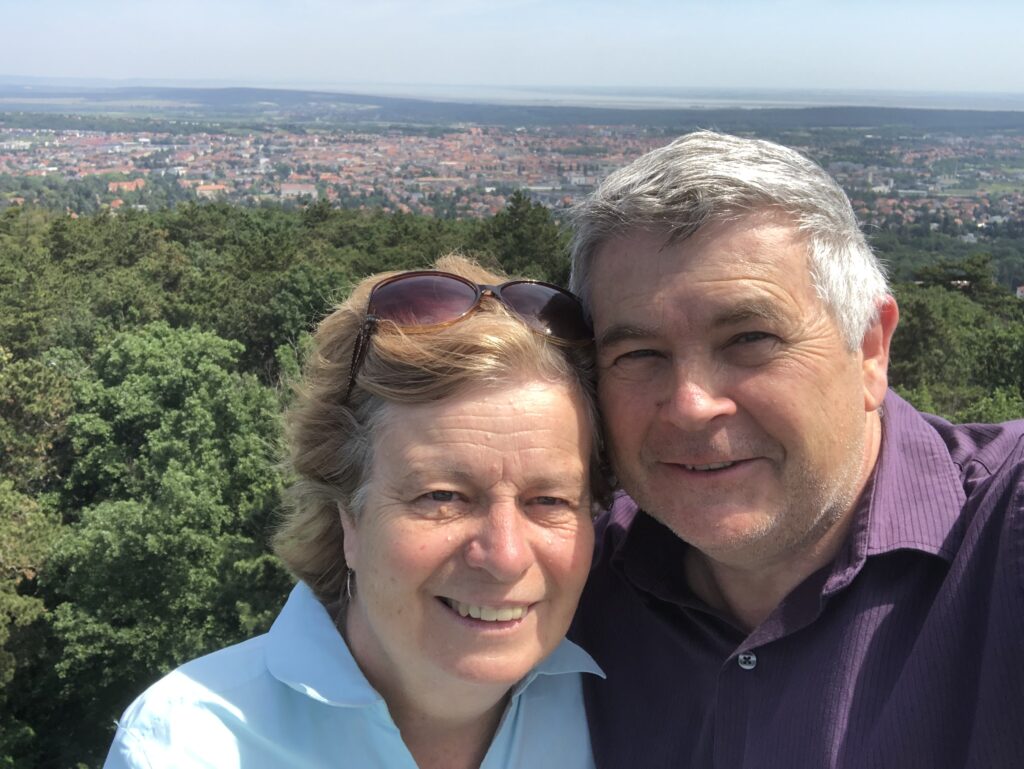
What could you do as a Hungarian teacher overseas?
In the first year I didn’t work to be with the girls, I only visited the university for English literature classes. We sent the girls to preschool, because we wanted them to learn English in the short time while in Houston. When we returned to Hungary, the older one didn’t forget much, because I took her to a Saturday language school. So, when we returned to the U.S. in 1995, she could introduce herself in English on the first day of school. I was very proud of her. Of course, the little one forgot everything, so she had to start learning English again, but that was fine, as it usually goes very quickly for young children. We lived in Houston for two years, then moved to San Diego, where I got a job at a language school: I taught English to foreign students, I really enjoyed it.
How did you become a weekend Hungarian school teacher and then a school principal in San Francisco?
In San Diego there’s always been a lot of movement: people usually lived there only for a few years. The same happened to us; we had to move to Northern California in 2001 because of my husband’s work. His position remained within the framework of the University of California, but he was transferred to a public research institute run by the University of Berkeley, where he’s been working ever since. So by now we’ve lived in San Francisco for well over twenty years. The girls were very sad when we moved, because they loved San Diego so much, but everything changed when they started scouting. The Hungarian school and scouting are held at the same time and place. When we sat down for the first parents’ meeting of the Hungarian school, within ten minutes it was announced that a teacher was needed… And in the fifteenth minute of that meeting I was already the teacher of that class. This happened on Sunday, 9 September, 2001—I remember exactly as it was two days before the terrorist attacks. On the way home, we crossed the bay bridge and my husband and I looked at each other: do we really want to do this every other week? Our answer was yes; and to our great joy, our daughters also wanted it. By then, they had already started speaking English to each other, even at home, as it often happens. From the first day, the scouts welcomed them with great love, and my then 13-year-old daughter was happy to report that there were finally children like them: they understood and spoke Hungarian, but sometimes were looking for words—the girls immediately found their place. I’ve been happily working there every other Sunday ever since. I’ve been teaching the oldest age group in recent years, preparing them for KMCSSZ’ Hungarian studies exams.
When the previous principal decided to hand over this role in 2011, I gladly accepted it to take over. We changed some things, for example, the appointment of the director is for two years only, so since then I have been re-confirmed in this position quite a few times. I think I’ll be happy to do it for another year or two, and then I’ll hand it over. While being principal, I didn’t stop teaching, I considered both as services. The school is closely connected with the scout team, so teachers are typically volunteer scout parents. We are lucky, because most of them relatively recently arrived from Hungary and they are qualified teachers.
I heard that there could be tensions between teachers who lived in the U.S. for a long time and those who arrived recently. Do you see that, too?
The source of the conflict may be that the teachers who’ve recently arrived from Hungary want to use the Hungarian curriculum here as well. To do this, you need to know that a weekend school is very different from an everyday school in Hungary, so the curriculum cannot be the same either. We also use textbooks from Hungary, but filtered and selected what we think appropriate. We are lucky, because we have many recently arrived families, so most of our children know Hungarian quite well. Even if they can’t read and write, they understand and speak the language. And we are strict: we don’t admit anyone who doesn’t understand Hungarian, because otherwise we wouldn’t be able to operate as a Hungarian school. And it’s the same in scouting: if a child has to be told what to do in English, it’s at the expense of the others. Nevertheless, I agree that children must be approached with respect, their needs and possibilities must be taken into account, and we cannot expect the same knowledge from them as in Hungary.
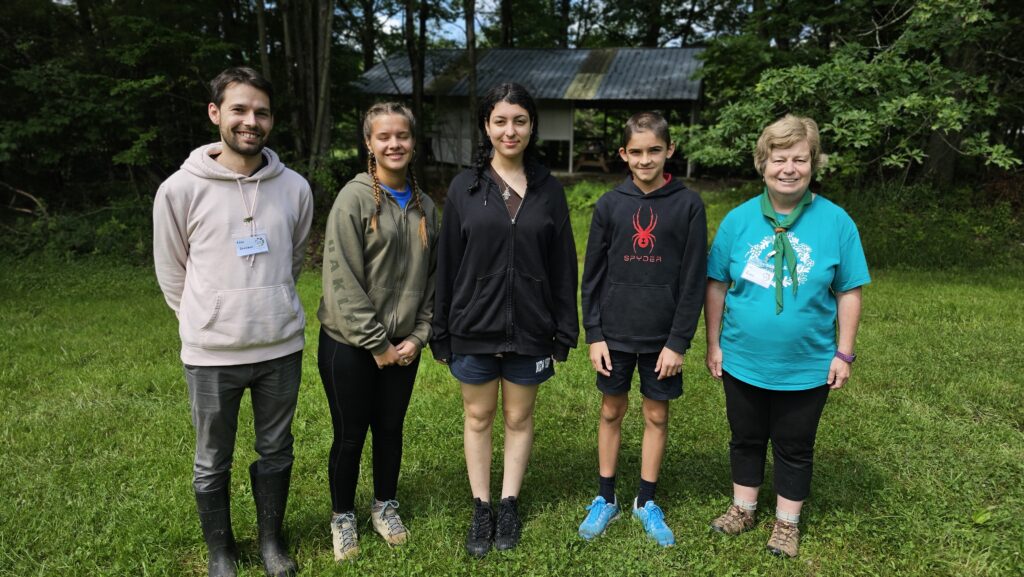
Another sensitive issue is the stability of the teaching staff in general.
In the current volunteer teaching staff of our school there are several people whose children have grown up, but are active scout leaders. The same happened with my daughters: they were scout leaders while I was a teacher. What usually happens is that when the children grow up and stop scouting, their parents usually also stop teaching, so there is a rotation, indeed. We usually work it out quickly though.
How many children do you have in your school? How does the school operate?
We have a wonderful location: the Woodside Priory Benedictine school in a beautiful environment. The small village is called Portola Valley, and the school was founded by monks who fled Pannonhalma, Hungary in the 1950s, and was in Hungarian hands for decades. Then it was sold and is now a private Benedictine high school. The Catholic Mission was also located there; they founded the scout troops—from the students of the Hungarian weekend school—together with the Reformed Church. We pay a nominal amount to the Benedictine school and our agreement is for the long term.
Before the pandemic, there were 75 of us. We have a kindergarten, for children from four to six-year-olds, and seven school classes. The students go to school until they are 14 years old, and at the end they prepare for the KMCSSZ exam in Hungarian for two years because we only meet every other week for two hours. Everything happens on Sundays. First, at 11 o’clock, the community goes to Hungarian mass. This is an old tradition. Not everyone is Catholic, some people simultaneously visit the Reformed church, and they come over afterwards. Approximately half of the children go to one of the two churches regularly. The Hungarian weekend school starts at 12:30 pm and lasts until 2:30 pm. Then there is a snack break and scouting activities run from 3:00 pm to 6:00 pm. It’s also a challenge for the parents, because it’s Sunday night by the time everyone gets home, but it’s all done in one day.
This schedule and cooperation seems ideal…
We didn’t invent it, we just inherited it. It remained like this for many decades because it worked. Ever since I’ve been here, we’ve claimed: every student of the Hungarian school must be a scout, and every scout must go to the Hungarian school. Parents usually bring their children here because of the Hungarian school, and the children want to stay because of scouting. It works very well, because after teaching, the children continue to practice the Hungarian language during the scouting sessions.
Are you happy to teach because of these circumstances, or do you have other motivations? What about your daily work and your family?
I became a special education teacher in an American school in Northern California. I also teach during the week, and I like it very much, but being able to teach Hungarian beats everything else. My husband continues to do research; he also likes his work very much. He always says: he is one of those lucky people who can do what they really love during working hours and are even paid for it. He still has many more opportunities here than at home: he works in a very prestigious group in the field of laser physics.
The girls are adults now, and both of them are scout assistant leaders, but none of them are actively scouting at he moment, as both are mothers. I already have three grandchildren. My younger daughter, Csilla has two sons: one was four in May, the other will be two in August. They live near us. She has an American husband, but luckily he is very supportive of the boys learning Hungarian. Csilla only speaks Hungarian to them and we, grandparents, spend a lot of time with them, too. Even so, the older one was three and a half when he started to speak in Hungarian. He’s been speaking well since, so, from September he can go to the Hungarian kindergarten. My older daughter, Anna, just had a baby girl. She married a Hungarian scout from New Brunswick, NJ. They live near Chicago. She is a special education teacher, her husband is an engineer. Because of teaching, I couldn’t visit them until the beginning of June, when I got on the plane right away to see my granddaughter for the first time. After the camp I will visit them again, and then return here to Fillmore for the annual scout leadership camp.
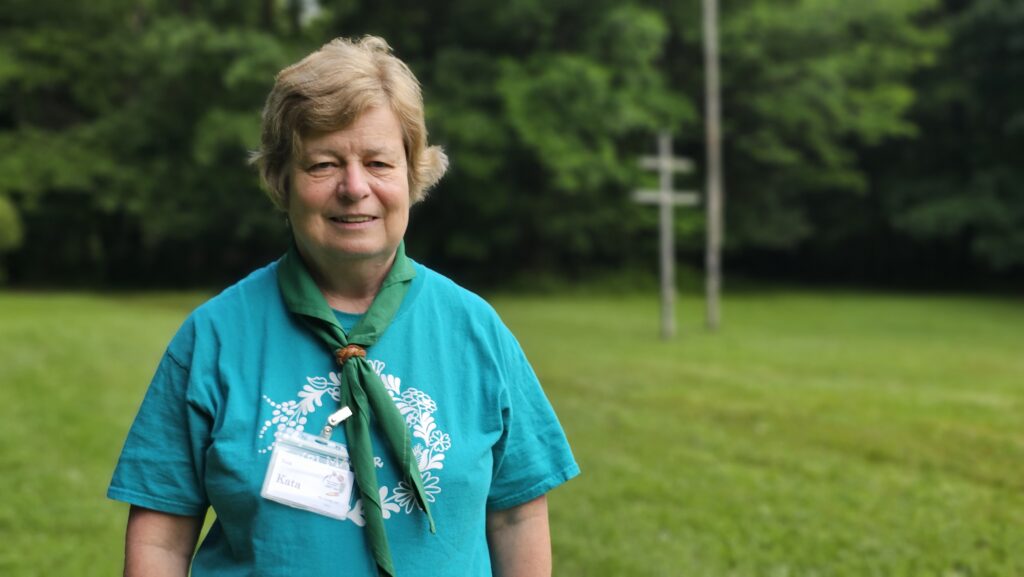
You are the director of this two-week Hungarian School Camp. How did you become involved?
The first camp was established by the KMCSSZ in 1967 and ran for three weeks each summer; then it became a two-week course in the 2000s. Around 2010, Endre Szentkirályi and Eszti Pigniczky wanted to hand over the leadership of the camp. They invited me here. At that time I had already been leading language classes for years as a scout officer in the scout leadership camps, and I was happy to visit this school camp. They didn’t invite me as a teacher, just to look around, but at the end they asked: what if I were the director?
This seemed to happen even faster than your Hungarian school ‘career’.
Oh, the question scared me at first, because they ran the camp as a couple: one of them was the school principal, the other was the camp leader. Therefore, I didn’t dare to take on the two tasks alone, especially with me living in California and flying here with one or two suitcases, while a camp like this requires a lot of equipment, as you can see. Therefore, in 2010, Eszti remained the camp leader, and I became the school principal. Noémi Szilágyi is already the fifth camp leader with whom I have worked. Among other things, my job is to recruit teachers.
Who are the current teachers? There are a lot of young people this year, but that’s not usually the case.
The daily six school hours are taught by six teachers and four assistants. who came from several states in the U.S., from Florida to Ohio, and from Hungary, Transylvania and Transcarpathia. In terms of age, there are students in their twenties; a mother who brought her child; and there is also a veteran teacher, who’s over 70 years old. We are all united by our love for children. This year there are only two of us from the ‘elders’ who’ve been coming regularly. I hope some of the new ones will also return next year. It’s an advantage if the teachers are also scout leaders, because they know what such a camp should be like. We organize this camp under the KMCSSZ umbrella and along the lines of scout camps, but we don’t expect only scouts participating; they don’t need to have or bring uniforms. Only the day officer, the camp leader and his deputy, and me, the school principal, must wear scout ties all along.
It’s not just for scouts, but there are guards, flags, reports, prayers, etc. Its spirit also seems to be completely similar to the scout camps…
Yes, and the daily schedule is also similar in many respects, but it’s different in that we take school teaching seriously: from 9 am to 1 pm there are classes —not in buildings, but covered outdoor places where kids sit and study. They spend the afternoon in groups like in scouting based on their age, but these are not the same groups as the school classes, which are based on their language skills. When they arrive at the camp, we playfully assess them; then it becomes clear how many teachers and children we have, how many classes we can start. This year, we have five classes: in four we teach the basic curriculum, while the fifth is an intensive Hungarian curriculum course after which they can take a proficiency exam on the last days of the camp.
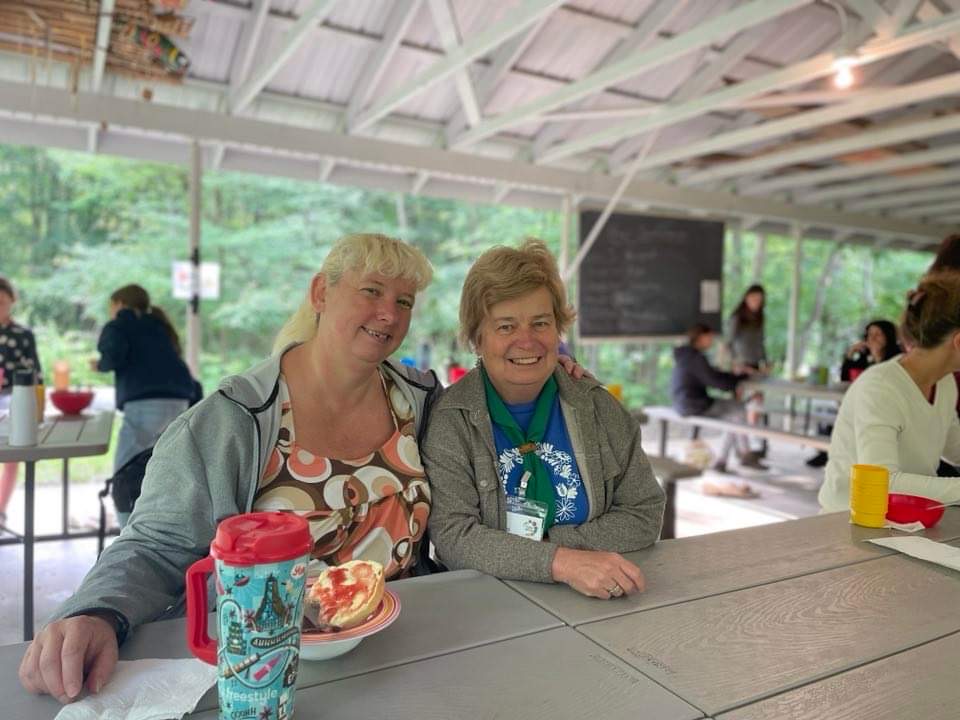
This must be very intensive, since elsewhere, like in San Francisco, as you mentioned, they learn that curriculum in two years…
It’s indeed very intensive and is usually recommended for scouts who don’t have a Hungarian school in their area where they live. However, we now have a student who is not a scout, but wants to try himself. He can learn a lot, because the curriculum includes the most basic knowledge a 14-year-old in Hungary needs to know in terms of geography, history, grammar, and literature. Our material includes only 14 poems, so obviously doesn’t cover the whole curriculum in Hungarian literature, but we can show the essence of it. For the other classes, we also have a basic curriculum, which includes the most important events of Hungarian history and the geography of Hungary, a little grammar and literature. But what we can actually teach always depends on the children. The best and most fortunate situation is when experienced teachers come, because they are able to make changes as necessary.
The mornings are about learning. What about the afternoons?
There are three types of programs going on at the same time: folk dance lessons, sports and handicrafts. In addition, there can be a joint game in which everyone participates. The teenage group leaders are with the children all day, they take care of the children, while the young adult leaders, the so-called program body, lead the afternoon programs. Noémi comes up with the frame of the program, but outsources the details to the leaders, who put it together. She also takes care of the equipment. This year it was easy, because Florida had the diaspora school camp in March, where they prepared a lot of supplies and shipped those supplies here from Florida. We also have three scout leaders from the Carpathian Basin, who spend the entire summer in the U.S., visiting all the scout camps.
What happens after the courses?
From six to seven in the evening the children go back to their classes to deepen what they learned in the morning in a playful way. They aren’t very enthusiastic about this, but in fact the 45 minutes pass so quickly that they don’t even notice. This also worked out pretty well. In the evening, there are two types of programs: campfire or dance hall event. Both are very much loved. The teachers read an evening story in the bedrooms, which is usually matched to the main topic of the camp, which is now the time of the knights. Last year there were folk tales, before that Hungaricums (i.e. cultural phenomena that are characteristically Hungarian). Yesterday I was with the older girls; while reading, I could hear them moving less and less, and at the end there was complete silence. It was a very good feeling.
It’s not only hard to find teachers, but also children.
There was oversubscription for many years. It happened at one point that 65 children participated, even though we always said that we would close the applications at 50, but we never had the heart to enforce it. We are now two years after the Covid pandemic and we have only 42 participants. We have held the camp every year so far, except for 2020. We restarted it in 2021 with a small number of staff and only in order not to break this 50-year-old tradition, during which the children develop a lot in terms of their knowledge of Hungarian. I don’t think it is necessary to draw long-term conclusions from this year’s numbers.
Those who are not scouts can at least ‘get a taste’ of this way of life here. Those who can’t go to a Hungarian school can get a ‘concentrated dose’ of it here. And they get to know each other, so this is also a Hungarian community-building opportunity. What about the children’s language skills?
They try to speak English among themselves, but we are very much against it. There were years when we rewarded them with glass balls if we heard them speaking Hungarian among themselves. There was also a year when they made a mill game board, but they could only play if they had collected the required number of discs. What a big deal if a team could already start playing because they had enough discs! We try to motivate them to use the Hungarian language with positive feedback, but the fact that they hear it all day and are forced to speak Hungarian at least during the classes and the afternoon session, as well as at the campfire, already implies a lot of practice and development for their language skills. Parents are surprised every year that their children speak Hungarian better and much more after the camp.
So the school camp seems to work. Does it have a long-term future?
It definitely works! I really believe in its future. We want to give children opportunities for playful learning here in Fillmore for many years to come.
Read more Diaspora interviews:

